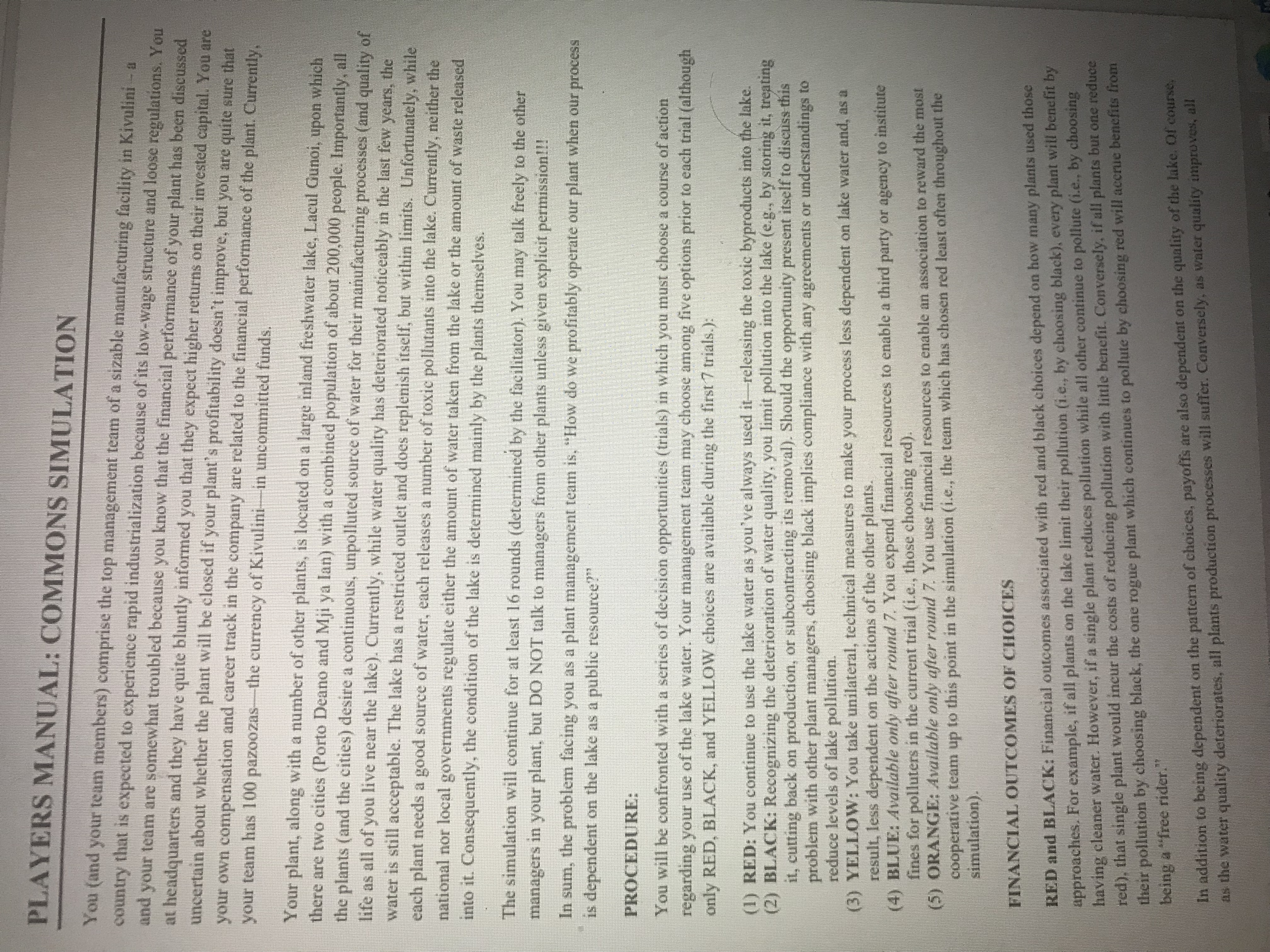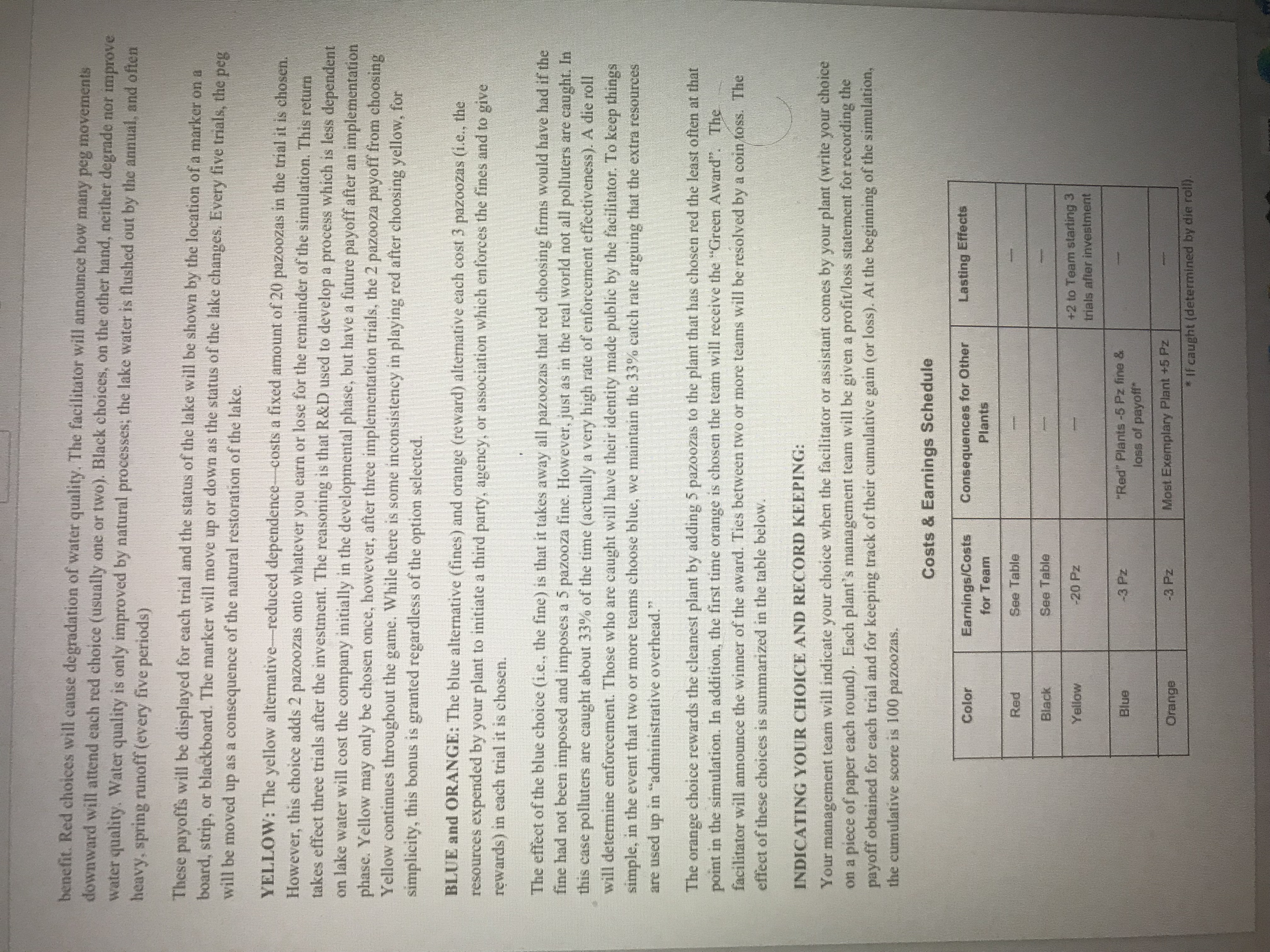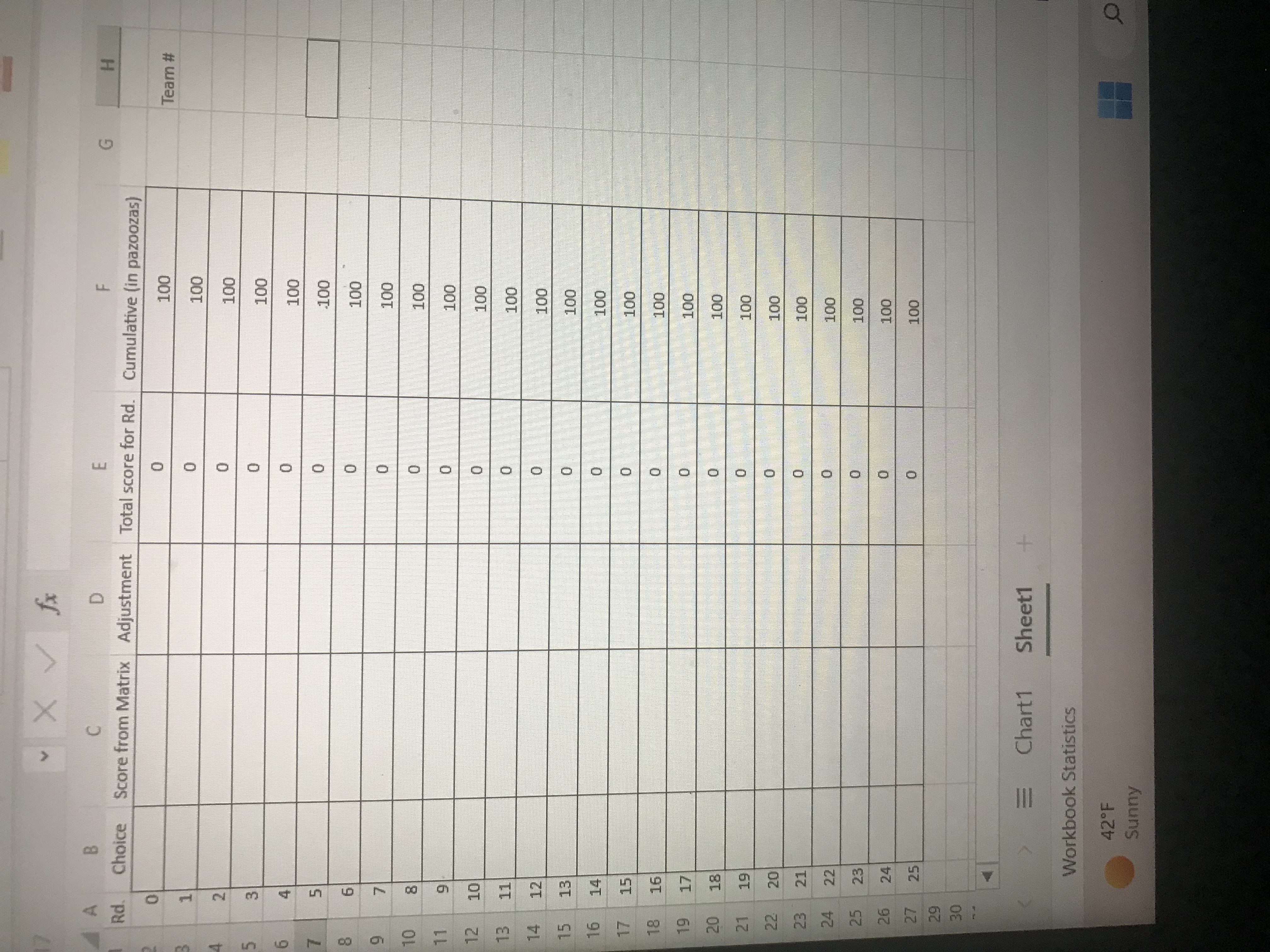Answered step by step
Verified Expert Solution
Question
1 Approved Answer
PLAYERS MANUAL: COMMONS SIMULATION You (and your team members) comprise the top management team of a sizable manufacturing facility in Kivulini - a country



PLAYERS MANUAL: COMMONS SIMULATION You (and your team members) comprise the top management team of a sizable manufacturing facility in Kivulini - a country that is expected to experience rapid industrialization because of its low-wage structure and loose regulations. You and your team are somewhat troubled because you know that the financial performance of your plant has been discussed at headquarters and they have quite bluntly informed you that they expect higher returns on their invested capital. You are uncertain about whether the plant will be closed if your plant's profitability doesn't improve, but you are quite sure that your own compensation and career track in the company are related to the financial performance of the plant. Currently, your team has 100 pazoozas-the currency of Kivulini-in uncommitted funds. Your plant, along with a number of other plants, is located on a large inland freshwater lake, Lacul Gunoi, upon which there are two cities (Porto Deano and Mji ya lan) with a combined population of about 200,000 people. Importantly, all the plants (and the cities) desire a continuous, unpolluted source of water for their manufacturing processes (and quality of life as all of you live near the lake). Currently, while water quality has deteriorated noticeably in the last few years, the water is still acceptable. The lake has a restricted outlet and does replenish itself, but within limits. Unfortunately, while each plant needs a good source of water, each releases a number of toxic pollutants into the lake. Currently, neither the national nor local governments regulate either the amount of water taken from the lake or the amount of waste released into it. Consequently, the condition of the lake is determined mainly by the plants themselves. The simulation will continue for at least 16 rounds (determined by the facilitator). You may talk freely to the other managers in your plant, but DO NOT talk to managers from other plants unless given explicit permission!!! In sum, the problem facing you as a plant management team is, "How do we profitably operate our plant when our process is dependent on the lake as a public resource?" PROCEDURE: You will be confronted with a series of decision opportunities (trials) in which you must choose a course of action regarding your use of the lake water. Your management team may choose among five options prior to each trial (although only RED, BLACK, and YELLOW choices are available during the first 7 trials.): (1) RED: You continue to use the lake water as you've always used it-releasing the toxic byproducts into the lake. (2) BLACK: Recognizing the deterioration of water quality, you limit pollution into the lake (e.g., by storing it, treating it, cutting back on production, or subcontracting its removal). Should the opportunity present itself to discuss this problem with other plant managers, choosing black implies compliance with any agreements or understandings to reduce levels of lake pollution. (3) YELLOW: You take unilateral, technical measures to make your process less dependent on lake water and, as a result, less dependent on the actions of the other plants. (4) BLUE: Available only after round 7. You expend financial resources to enable a third party or agency to institute fines for polluters in the current trial (i.e., those choosing red). (5) ORANGE: Available only after round 7. You use financial resources to enable an association to reward the most cooperative team up to this point in the simulation (i.e., the team which has chosen red least often throughout the simulation). FINANCIAL OUTCOMES OF CHOICES RED and BLACK: Financial outcomes associated with red and black choices depend on how many plants used those approaches. For example, if all plants on the lake limit their pollution (i.e., by choosing black), every plant will benefit by having cleaner water. However, if a single plant reduces pollution while all other continue to pollute (i.e., by choosing red), that single plant would incur the costs of reducing pollution with little benefit. Conversely, if all plants but one reduce their pollution by choosing black, the one rogue plant which continues to pollute by choosing red will accrue benefits from being a "free rider." In addition to being dependent on the pattern of choices, payoffs are also dependent on the quality of the lake. Of course, as the water quality deteriorates, all plants production processes will suffer. Conversely, as water quality improves, all benefit. Red choices will cause degradation of water quality. The facilitator will announce how many peg movements downward will attend each red choice (usually one or two). Black choices, on the other hand, neither degrade nor improve water quality. Water quality is only improved by natural processes; the lake water is flushed out by the annual, and often heavy, spring runoff (every five periods) These payoffs will be displayed for each trial and the status of the lake will be shown by the location of a marker on a board, strip, or blackboard. The marker will move up or down as the status of the lake changes. Every five trials, the peg will be moved up as a consequence of the natural restoration of the lake. YELLOW: The yellow alternative-reduced dependence-costs a fixed amount of 20 pazoozas in the trial it is chosen. However, this choice adds 2 pazoozas onto whatever you earn or lose for the remainder of the simulation. This return takes effect three trials after the investment. The reasoning is that R&D used to develop a process which is less dependent on lake water will cost the company initially in the developmental phase, but have a future payoff after an implementation phase. Yellow may only be chosen once, however, after three implementation trials, the 2 pazooza payoff from choosing Yellow continues throughout the game. While there is some inconsistency in playing red after choosing yellow, for simplicity, this bonus is granted regardless of the option selected. BLUE and ORANGE: The blue alternative (fines) and orange (reward) alternative each cost 3 pazoozas (i.e., the resources expended by your plant to initiate a third party, agency, or association which enforces the fines and to give rewards) in each trial it is chosen. The effect of the blue choice (i.e., the fine) is that it takes away all pazoozas that red choosing firms would have had if the fine had not been imposed and imposes a 5 pazooza fine. However, just as in the real world not all polluters are caught. In this case polluters are caught about 33% of the time (actually a very high rate of enforcement effectiveness). A die roll will determine enforcement. Those who are caught will have their identity made public by the facilitator. To keep things simple, in the event that two or more teams choose blue, we maintain the 33% catch rate arguing that the extra resources are used up in "administrative overhead." The orange choice rewards the cleanest plant by adding 5 pazoozas to the plant that has chosen red the least often at that point in the simulation. In addition, the first time orange is chosen the team will receive the "Green Award". The facilitator will announce the winner of the award. Ties between two or more teams will be resolved by a coin toss. The effect of these choices is summarized in the table below. INDICATING YOUR CHOICE AND RECORD KEEPING: Your management team will indicate your choice when the facilitator or assistant comes by your plant (write your choice on a piece of paper each round). Each plant's management team will be given a profit/loss statement for recording the payoff obtained for each trial and for keeping track of their cumulative gain (or loss). At the beginning of the simulation, the cumulative score is 100 pazoozas. Costs & Earnings Schedule Color Earnings/Costs for Team Red See Table Black See Table Yellow -20 Pz Blue -3 Pz Consequences for Other Lasting Effects Plants "Red" Plants -5 Pz fine & loss of payoff* Orange -3 Pz Most Exemplary Plant +5 Pz +2 to Team starting 3 trials after investment * If caught (determined by die roll). A A B Rd. Choice 0 3 1 4 2 5 3 3 V X fx C D E F Score from Matrix Adjustment Total score for Rd. Cumulative (in pazoozas) 0 100 0 100 0 100 0 100 6 LO 4 0 100 7 5 0 100 8 6 LD 0 100 9 7 0 100 10 8 DO 0 100 11 9 0 100 12 10 0 100 13 11 U 100 14 12 U 100 15 13 U 100 16 14 0 100 17 15 0 100 18 16 100 19 17 0 100 20 18 0 100 21 19 0 100 22 0 20 100 23 21 24 22 22 0 100 0 100 25 23 0 100 26 0 24 100 27 0 25 100 29 30 = Chart1 Sheet1 + Workbook Statistics 42F Sunny G H Team # D
Step by Step Solution
There are 3 Steps involved in it
Step: 1

Get Instant Access to Expert-Tailored Solutions
See step-by-step solutions with expert insights and AI powered tools for academic success
Step: 2

Step: 3

Ace Your Homework with AI
Get the answers you need in no time with our AI-driven, step-by-step assistance
Get Started


